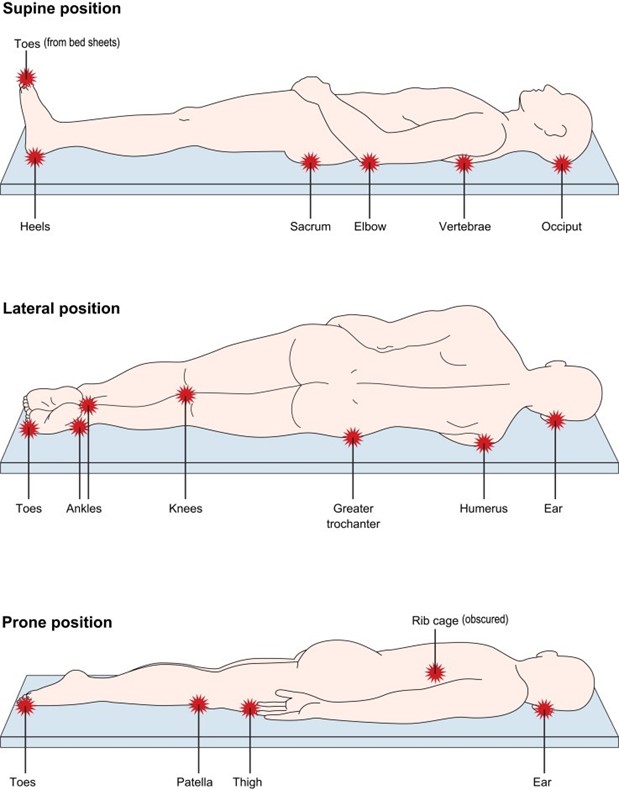A nurse is helping to place a client into the prone position. The nurse should use a small pillow to relieve pressure from which of the following areas of the client's body?
Occiput
Breasts
Heels
Coccyx
The Correct Answer is B
The occiput refers to the back of the head. Placing a small pillow or padding under the occiput can help relieve pressure and provide support to the client's head and neck when they are placed in the supine position.
Breasts: When in the prone position, breasts may be compressed or flattened. To relieve pressure, it may be necessary to use positioning techniques that distribute weight evenly and avoid direct pressure on the breasts, such as using cushions or foam pads to support the chest and torso.
Heels: The heels are prone to pressure ulcers when a client is lying in the supine position for extended periods. To relieve pressure, it is important to use proper heel offloading techniques, such as placing heel protectors or pillows under the lower legs to elevate the heels off the bed surface and prevent direct pressure.
Coccyx: The coccyx is the tailbone region at the base of the spine. When in the supine position, pressure on the coccyx can be relieved by using a cushion or padding under the pelvic area, specifically under the bony prominence of the coccyx, to reduce direct pressure and provide comfort.

Nursing Test Bank
Naxlex Comprehensive Predictor Exams
Related Questions
Correct Answer is D
Explanation
A. The decision to place a loved one in long-term care is complex and should be made based on the family's needs and situation, not dictated by the nurse.
B. Suggesting the son find other family members for help is a reasonable idea, but it does not directly address his fatigue.
C. While taking care of a loved one is important, making the son feel obligated is not supportive or helpful.
D. Correct. Respite care provides temporary relief to caregivers and can help address the son's fatigue while ensuring his mother's needs are met.
Correct Answer is C
Explanation
A. Incorrect. While expressing empathy is important, the nurse should also provide practical information and support.
B. Incorrect. Delaying the discussion may leave the client feeling unheard and anxious about their upcoming chemotherapy.
C. Correct. This response acknowledges the client's concerns and provides a proactive solution to address the potential issue of hair loss. Offering information about head covering options demonstrates the nurse's support and willingness to help the client manage the physical and emotional impact of chemotherapy.
D. Incorrect. Dismissing the client's concern may contribute to their anxiety and apprehension about the chemotherapy process. It's important to address all aspects of the client's experience, including potential side effects like hair loss.
Whether you are a student looking to ace your exams or a practicing nurse seeking to enhance your expertise , our nursing education contents will empower you with the confidence and competence to make a difference in the lives of patients and become a respected leader in the healthcare field.
Visit Naxlex, invest in your future and unlock endless possibilities with our unparalleled nursing education contents today
Report Wrong Answer on the Current Question
Do you disagree with the answer? If yes, what is your expected answer? Explain.
Kindly be descriptive with the issue you are facing.
